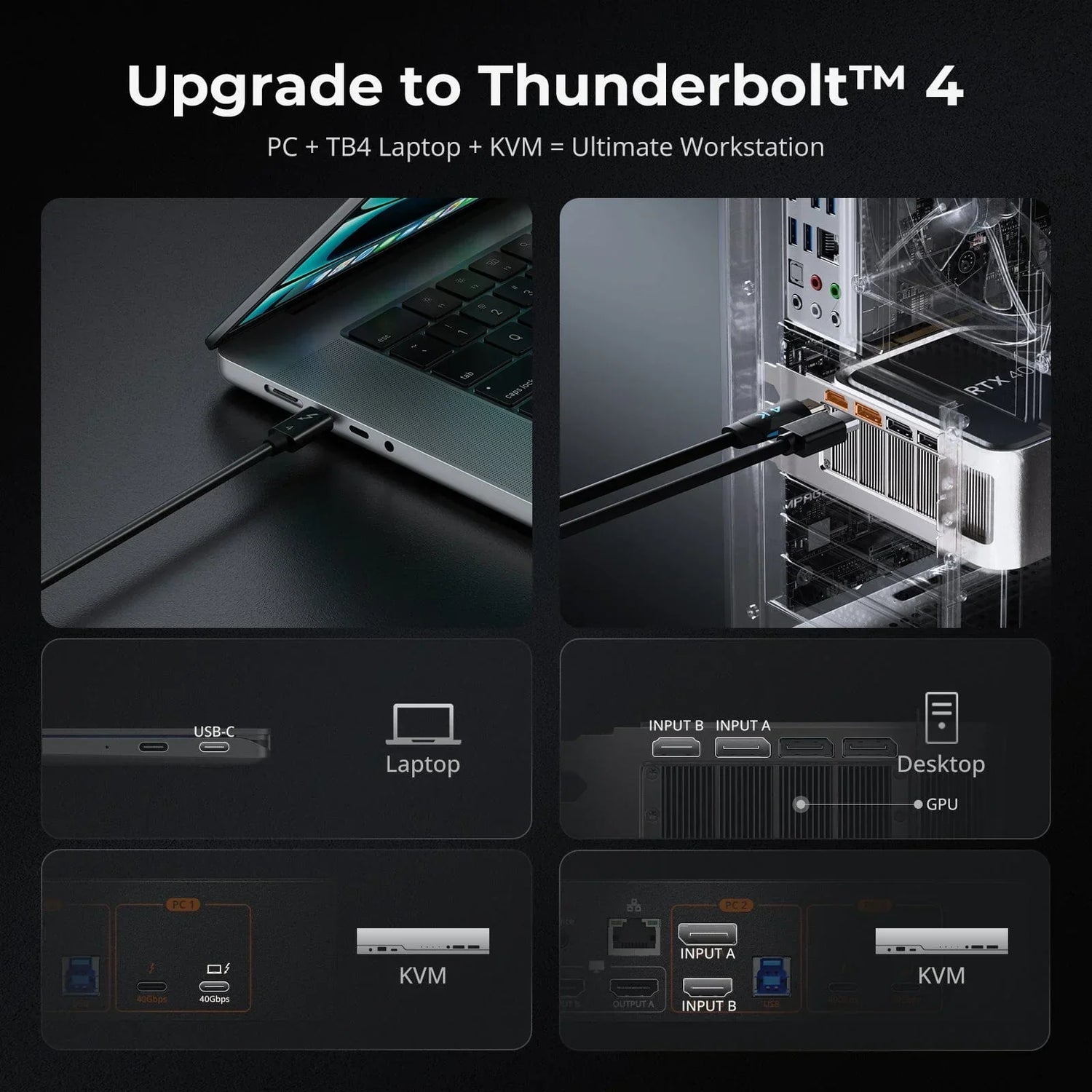In the ever-evolving landscape of IT infrastructure management, two essential tools play distinct roles: KVM (Keyboard, Video, Mouse) switches and serial console servers. These devices empower administrators to control and manage various aspects of their hardware remotely. In this comprehensive guide, we'll delve into the world of KVM switches and serial console servers, highlighting their differences, applications, and how they cater to different aspects of IT management.
Uses of KVM Switches
- Managing Multiple Computers
At its core, a KVM switch is designed to manage multiple computers using a single set of peripherals. This includes sharing one keyboard, mouse, and display among various devices.
In server rooms and data centers, KVM switches are deployed to control racked servers efficiently. Administrators can toggle control between servers with a simple button press, streamlining server maintenance tasks.
- Local and Remote Control
KVM switches offer both local and remote control options. While local control involves physically connecting peripherals to the switch, remote control is achieved using IP KVM switches. This enables administrators to access and manage servers and PCs from anywhere with an internet connection.
- Reducing Clutter
In server rooms, space optimization is paramount. KVM switches eliminate the need for separate sets of peripherals for each computer, reducing clutter and improving organization.
- Streamlining Tasks
KVM switches facilitate various tasks, including rebooting computers, accessing BIOS settings, and managing multiple servers and PCs efficiently. This centralized control enhances productivity and minimizes downtime.
Uses of Serial Console Servers
- Managing Serially Connected Devices
Serial console servers, often referred to as terminal servers, are purpose-built for managing devices that utilize RS-232 serial connections. This includes routers, LAN switches, servers, firewalls, power distribution units, and more. They excel in managing "headless" hardware, which lacks a built-in graphical user interface.
- Diverse Connectivity Options
Serial console servers provide diverse connectivity options. Administrators can connect to devices using SSH applications, web-based interfaces, or other protocols suitable for their infrastructure.
- Remote Access and Control
These servers enable remote access to devices from various locations worldwide. Tasks like firmware updates, temperature monitoring, and configuration changes can be executed without the need for physical presence.
- Built-in Connectivity Features
Some serial console server models come equipped with built-in modems or 4G cellular connections, enhancing remote management capabilities.
Port counts on these devices can range from a few ports to 32 or 48 ports, accommodating different scales of infrastructure.
Conclusion
The choice between a KVM switch and a serial console server hinges on the specific devices you need to control and the nature of your IT infrastructure.
KVM Switches: These excel at managing computers and servers, providing both local and remote control options. They are ideal for environments where graphical interfaces are crucial.
Serial Console Servers: Tailored for managing serially connected devices, they offer various methods for remote access and control. They shine in scenarios where a graphical interface is absent, making them indispensable for headless hardware.
In some instances, a combination of both KVM switches and serial console servers may be necessary to effectively manage your diverse IT infrastructure. The key to making the right choice is a deep understanding of your equipment mix and requirements. Should you require guidance, don't hesitate to consult experts who can tailor solutions to your specific needs.
By choosing the right tools for your IT arsenal, you empower yourself to efficiently manage and maintain your infrastructure, ensuring its reliability and performance.




